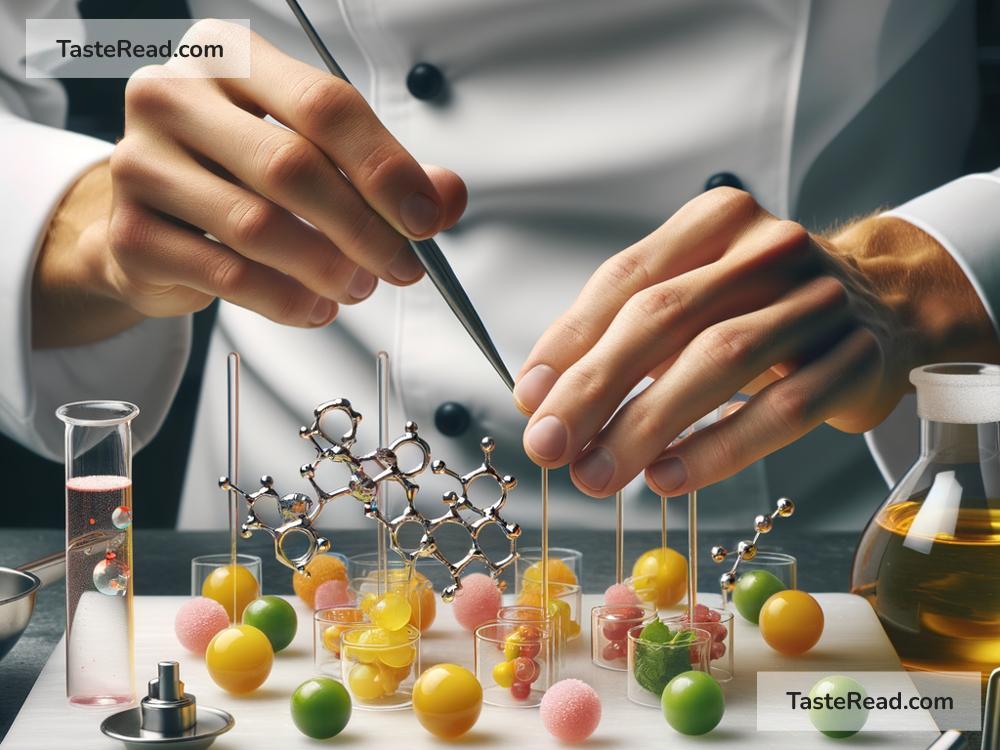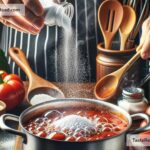The Science of Cooking with Chemical Sensibility: Techniques and Tips
Cooking is not just an art; it’s also a science. From baking bread to searing meat, every step in the kitchen involves chemical reactions. Understanding these reactions can help you create tastier meals and solve common cooking challenges. In this blog post, we’ll explore the fascinating science of cooking with chemical sensibility, and share simple techniques and tips to improve your skills in the kitchen.
What Is Chemical Sensibility in Cooking?
Chemical sensibility means being aware of the chemical reactions that happen during cooking and knowing how to use them to your advantage. Whenever you mix, heat, or cool ingredients, you’re triggering reactions that change their texture, flavor, and appearance. By understanding these processes, you can make better decisions and elevate your cooking game.
For example, why does bread rise? Or why does meat brown when you cook it? These are chemical processes you can learn to control. Cooking with chemical sensibility isn’t about memorizing complicated formulas—it’s about knowing how and why cooking works, so you can experiment with confidence.
The Role of Heat in Cooking
Heat is at the heart of most cooking techniques. Heat causes molecules in food to move faster, breaking them down or combining in new ways to create delicious flavors. Let’s take a closer look at how heat works in popular cooking methods:
1. Searing and the Maillard Reaction
Have you ever wondered why seared steak tastes so good? It’s because of the Maillard reaction—a unique chemical process that happens when amino acids (from proteins) and sugars (from carbohydrates) interact under high heat. This reaction creates hundreds of flavor compounds, giving meat its rich, browned taste.
Tips for searing:
– Dry the surface of your meat before cooking. Water can prevent browning.
– Use high heat and let the meat rest undisturbed in the pan. Constant flipping disrupts the process.
2. Boiling and Gelatinization
When you boil pasta or cook potatoes, starch molecules absorb water and swell in a process called gelatinization. This makes food soft and easier to digest.
Tips for boiling:
– Add salt to the water before boiling. Salt improves flavor and slightly raises the boiling point of the water.
– Avoid overcooking—monitor the texture to keep food firm yet tender.
3. Baking and Leavening
Baking bread or cakes involves chemical reactions like leavening, where trapped gases such as carbon dioxide expand to create a light, fluffy texture. Yeast, baking soda, and baking powder are common leavening agents.
Tips for baking:
– Measure carefully—ratios are crucial for baking chemistry.
– Preheat your oven so reactions occur at the right temperature.
Acids and Bases in Cooking
Acids and bases play a big role in cooking and can drastically change the taste, texture, and appearance of food.
1. Acids (e.g., Vinegar, Lemon Juice)
Acidic ingredients can tenderize meat, brighten flavors, and preserve food. For example, marinating meat with vinegar breaks down proteins, making it softer.
Tips for using acids:
– Don’t marinate meat in acid for too long—it can become mushy.
– Use acidic ingredients like lime or lemon juice to balance rich or overly salty dishes.
2. Bases (e.g., Baking Soda)
Bases, like baking soda, react with acidic ingredients to produce carbon dioxide bubbles, which help baked goods rise. Baking soda can also make food surface textures crispy, like in fried chicken batters.
Tips for using bases:
– Use carefully—a little baking soda goes a long way.
– Check recipes for balance between acid and base reactions to avoid unwanted flavors.
The Magic of Proteins
Proteins are essential building blocks in many foods, and they react in fascinating ways during cooking.
1. Denaturation
Proteins unravel or “denature” when exposed to heat, acid, or mechanical force. This process changes the texture of food (e.g., turning raw egg whites opaque when cooked).
Tips for cooking proteins:
– Use gentle heat to keep proteins tender (e.g., poaching eggs or slow-cooking meats).
– Monitor cooking times—overheated proteins can become tough.
2. Emulsification
Proteins and fats can combine to create emulsions—creamy mixtures like mayonnaise or salad dressing. Egg yolks, for example, act as emulsifiers.
Tips for emulsification:
– Add oil slowly while whisking to create smooth emulsions.
– If your emulsion breaks, add a little water and whisk vigorously to fix it.
Flavor Chemistry: Balancing Taste
The science of taste includes five basic flavors: sweet, salty, sour, bitter, and umami (savory). Balancing these flavors creates harmony in your dishes.
Tips for balancing flavors:
– Add a pinch of salt to cut bitterness or enhance sweetness.
– Use sugar to balance acidic or sour flavors, like in tomato-based dishes.
– Incorporate umami-rich ingredients like soy sauce or mushrooms for depth.
Experiment and Have Fun!
Cooking with chemical sensibility is about experimentation and learning. You don’t need to be a scientist or have special equipment to rethink how you cook—just pay attention to the reactions happening in your pan, pot, or oven.
Try new techniques, taste your food as you go, and don’t be afraid to make mistakes. Each step will deepen your knowledge of the science behind cooking and make you a more confident chef.
Remember, every dish is an opportunity to learn something new. Get curious, enjoy the process, and let the science guide you to delicious meals!
With these tips, you can bring a dose of chemistry into your cooking and create meals that are not just tasty, but scientifically perfected. Happy cooking!


